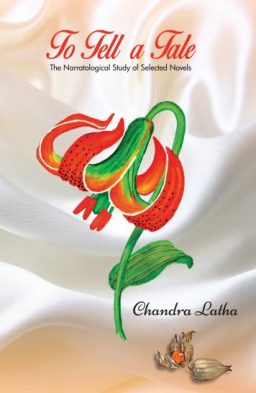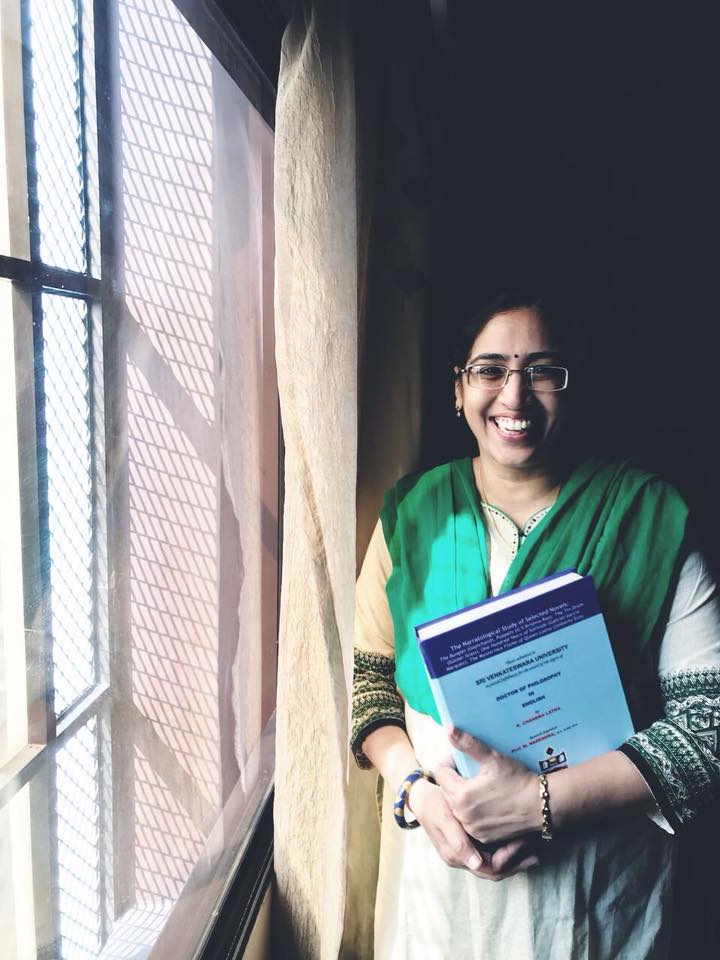
To tell a tale-20
(Chapter-4 Part-1)
-Chandra Latha
The Shattered Glass: The Tin Drum
Günter Grass
Where’s the Witch, black as pitch?
Here’s the black, wicked witch! Ha! Ha! Ha!
(Oskar Matzerath in The Tin Drum, Pg.589)
Günter Grass’s first novel, The Tin Drum (1959), is one of the most influential and important novels of the contemporary times. It is the first of the Danzig Trilogy, Cat and Mouse (1961) and Dog Years (1963) being the other two. The Tin Drum is one of the greatest post war novels, winning it’s writer, Günter Grass, a Noble prize and the fame of German Conscience.
Günter Wilhelm Grass was a German novelist, poet, playwright, illustrator, graphic artist, sculptor. Günter Grass received noble prize literature in 1999.
Grass was born in the free city of Danzig, Poland, to Wilhelm Grass (German) and Helene Grass (Kashubian) on 16th October, 1927. Grass referred himself as Kashubian. He served as a drafted soldier in Waffen-SS from 1944 until he was imprisoned by US forces in 1945.
After his release in 1946, Grass learnt stone masonry and sculptor. Grass began writing in 1950s. Grass was the co-founder of the Gruppe 47 (Group 47). In 1953, he moved to West Germany and studied at the Berlin University of Arts. He acted as the president to the Academy of Arts, Berlin from 1983 to 1986.
Grass’s famous works include The Tin Drum (1959), Cat and Mouse (1961), Dog Years (1963) – which are known as Danzig Trilogy. From the Diary of a Snail (1972), The Flounder (1977). The Meeting at Telgte (1979), Head births, or The Germans are Dying Out (1980), The Rat (1986),The call of the Toad (1992), Show Your Tongue (1989), Crabwalk (2002), What must be said (2012) are some of his other important books. Peeling the Onion (2006) is his first book in the trilogy of his autobiographical memoir. The Box (2008) and Grimms’ Words: A Declaration of Love (2010) being the other two.
In the book “Peeling the Onion”, for the first time, Grass revealed that he was a member of Waffen–SS. Because Grass felt “It was a weight on me, my silence over all these years is one of the reasons I wrote the book. It had to come out in the end.” (Bildungsroman https://en.wikipedia.org/wiki/Bildungsroman) (Nathan Thornburgh. Gunter Grass’s Silence, Time magazine, Monday, August 14, 2006, http://content.time.com/ time/arts/article/0,8599,1226380,00.html)
This public confession brought lot of criticism for being silent about the truth for a long time. Grass’s commitment to his own generation and his contribution in the rebuilding the war wounded Germany, this criticism cannot overlook the achievements of his entire lifetime because of his teenage action.
Grass was awarded with Georg Buchner Prize (1965), Honorary Fellow of the Royal Society of Literature (1993) and Hermann Kesten Prize (1995). The Tin Drum was made into a film by Volker Schlondorff in 1979. It won the Palme D’Or Award at Cannes Film Festival (1979) and Academy Award for Foreign Language Film (1980).
Günter Grass breathed his last on April 13th, 2015 in Lubeck, Germany. He was married to Ute Grunert (m.1979-2015), Anna Magarata Schwartz (m.1954-1978)
The Tin Drum became a trendsetting novel, with it’s unique novelistic narrative style of magic realism, effective representation of symbolism and surrealist approach to the theme. The clever blend of fact and fiction as experimented in the magic realism of The Tin Drum inspired many writers including the Latin American master craftsman, Gabriel Garcia Marquez, whose novel, One Hundred years of Solitude, is under this study.
Magic Realism is a literary or artistic genre in which realistic narrative and naturalistic technique are combined with surreal elements of dream or fantasy. In other words, the narrative is magically evolved through the combination of fact and fiction. In The Tin Drum, Grass employed several narrative devises like art, photography and so on to effectively present the fact or the reality in the narrative. Whereas the fantastic element in the narration is presented through the symbolism, allegory and so on. The combined effect is much vibrant and destructive, thus and hence, the reader gets shattered rather than spell bound. The unbelievable reality is fantastically presented as in Onion Cellar or puppy dogs in the pillboxes. The fantastic is realistically narrated as in the class room scene when Oscar realises his power of shriek breaks glasses of his kindergarten teacher and then the glasses of specimens blasting out the reptiles stocked in pungent chemicals. Magic realism in The Tin Drum is loud and grotesque. The reader is compelled to wonder whether to believe or not in the surrealistic domain and non-stop drum beat. The novel is a fact file of the most grotesque nights, Krystallnacht, the night of broken glass. The fantastic element is the mysterious power of Oscar’s voice that can shatter glasses into pieces.
In The Tin Drum, Oskar Matzerath, the protagonist, narrates his own life while he was an inmate of a mental asylum. Beginning the narrative from an incident of his grandparents (1899), continuing it up to the present and focusing more attention on the period between 1952 to 1954, the novel is more or less in the form of a memoir. Oskar Matzerath was born in 1924 in the city of Danzig as an auditory clairvoyant baby whose spiritual development was complete at the time of birth. On his third birthday, he receives a tin drum as gift and it becomes, almost, a part of him. On the same birthday, he decides not to grow and his growth is stopped until the end of the second book where he is measured two inches growth, but, that growth develops into a humpback.
The Tin Drum is a symbol of art and Oskar’s obsession to it and his possessiveness to his art and music during the difficult period of world wars directly imply a serious comparative narrative situation of Art versus War. The Second World War is compared and analysed with Oskar’s art and music. The implied statement is that art has the ability to defeat war and hatred. Oskar escapes war, fighting through his musical talent.
In chapter Nine, The Rostrum, Oskar manages to disrupt the rally of the Nazi army by playing his drums. Oskar plays a rhythm which is more complex and sensual than the march-tune of the rally. Despite the disruption of the activities of the Nazi party, the power of his music remains ambiguous. It seems that the music of the drum is disruptive and not a moral force aligned against the Nazis. This is especially evident in another component of Oskar’s music, his voice. As substitution for singing, Oskar’s voice is a terrible scream which exerts incredible power. Oskar’s voice has the power to break glass, which he uses as the leader of a gang of criminals to rob stores by breaking glasses of their front windows. (Gunter Grass. The Tin Drum. ISBN 067972575 X. Vintage international. 1985. Page 360)
Grass’s magical poetic imagery subtly aligns with political and cultural events and the reader realizes that Oskar is somehow the embodiment of Krystallnacht, the night of broken glass, which signalled the unmasked aggression of the Nazi party. Ultimately, Oskar becomes a magically symbolic character, embodying the wish to dismantle the emergent Nazi Party as well as the violence of the party.
Grass beautifully elucidates the paradox of post-war German consciousness. He describes the actions of the Nazi regime from Krystallnatch to the execution of the survivors of Polish post-office and the horrors of Nazi regime from 1920’s through the 1950’s. Unlike the other historical novels, it depicts political events during Second World War in tangled images instead of chronological narratives.
Art that Oskar demanding from the “sons and daughters of the Muses”, in front whom Oskar stood like a model, ready to be “slaughtered, crucified, nailed” (The Tin Drum, Pg. 463) on their papers with charcoal, is to capture his Goethe kind of soul, but not Rasputin like appearance. Professor Kuchen who invited Oskar to be a model for his aspiring art students, declares that “Art is accusation, expression, passion. Art is fight to finish between black charcoal and white paper.” (The Tin Drum, Pg. 463)
Thus, Oskar invokes a fierce battle between black and white and the lie and the truth. Oskar concludes, “However, the essence of Art is freedom.” (The Tin Drum, Pg.463)
Grass’ narrative strategy is based on photographic images to subvert the German and Nazi orthodox history and rescue the part of Danzig from oblivion. He dovetails real photographs with a picture perfect memoir of the narrator Oskar, leaving all possible visual impacts on reader.
Oskar, the narrator, conjures up the past by going over images etched in his memory or watching photographs kept in the family album. Thus, Grass intertwines the factual with the fantastic to create an ingenious magic realism.
The photographic images have been for him the epitome of the external world as well as the projection of his internal memory.
Words on optic sense such as, ‘peep hole’, ‘watching’, ‘see through’ and ‘eye’ (The Tin Drum, Pg. 4) combine to hint at the primacy of visual elements in the text. As a medium of inscription, photographic images preserve and record both world history and local occurrences. Oskar flips through his family album, remembering, reconstructing, and mourning the loss, and tells a story which belongs to everybody living through it, but which has not previously been told publicly. It is the photography that links technological reproduction to interior memory and history in The Tin Drum.
The novel is divided into three books depicting pre-war, war and post war.
The book–I delineates Oskar’s family history and the initial stage of Nazi. It deals with Ménage à trios among Oskar’s German father Alfred Matzerath, Danzig mother, Agnes Koljaijzek, and his Polish Uncle John Broski. The triangle relationship is a miniature of the political tussle between Germany, Danzig and Poland, which forecast World War-I.
Death pervades the second book in which Oskar loses John Broski, his presumptive father, Alfred Matzerath, Oskar’s lover, Roswitha, the somnambulist, the neighbour Mother Truczinski etc. One of the chapters of this book titled, “Inspection of concrete, or Barbaric Mystical bored” poignantly illustrates the absurdity of war in which many innocent people were sacrificed. At the end of the second book Oskar begins to grow, but grows into a humpback.
Book-III dwells on Oskar’s attempt to integrate himself into a new adult bourgeois life in the new post-war political entity. They search for surrogate emotional release with the help of onion to stimulate the outburst of teas and let the performance of Oskar and his band lead them back to their childhood. Later, Oskar is accused of murdering a nurse, imprisoned in the mental asylum where he writes down his memoir of the Nazi–period. The fear and guilt of Nazism making his chastisement of the monumentally criminal political deformity is the leitmotif of Oskar’s story. Through his camera-like perspective, Oskar furnishes the reader with an insight into a reflection of absurdity of collective guilt.
*****
(Contd..)

Chandra Latha, writer from Nellore won Telugu Association of North America award in 1997 for the novel “Regadi vittulu”. Her other novels are Vardhani(1995) and Vallu veellu paarijaataalu (2011). Her short fiction includes nearly 80 stories compiled in nenu nanna navutha (1996),Idam shareeram (2003) and vivarnam(2007). Her non-fiction are (Fish can fly!) ”vacche daretu(2010), itanala kadaku eeboothi boTlu(2010). And also published her blogposts in a book madata pejee(2010).
